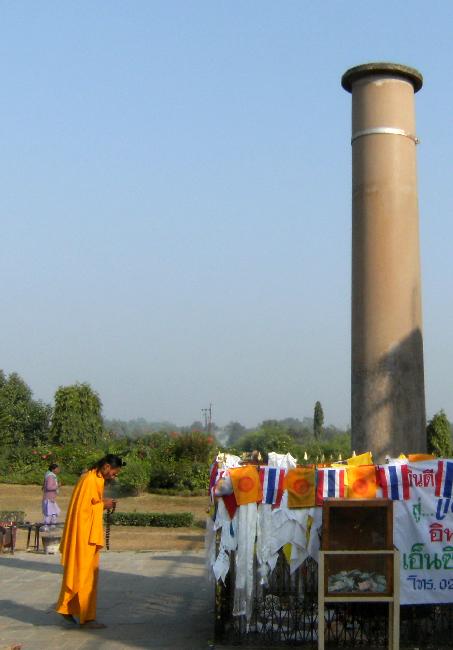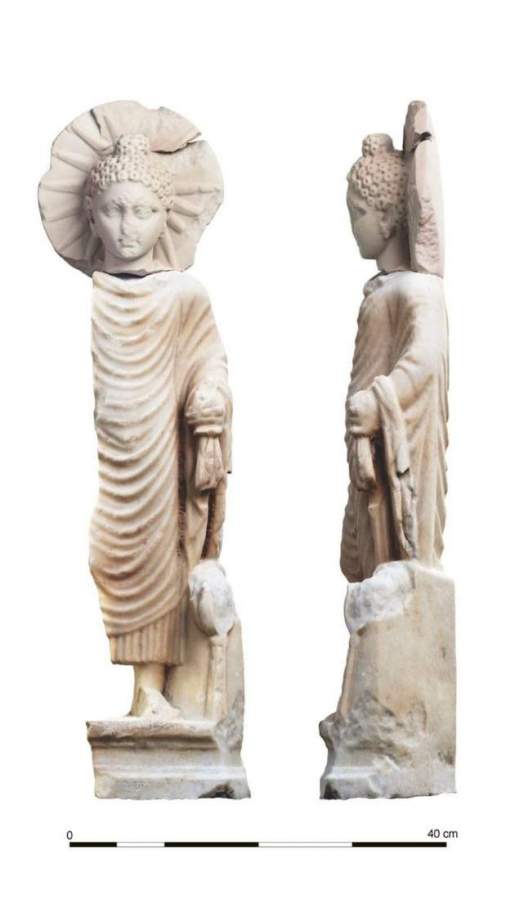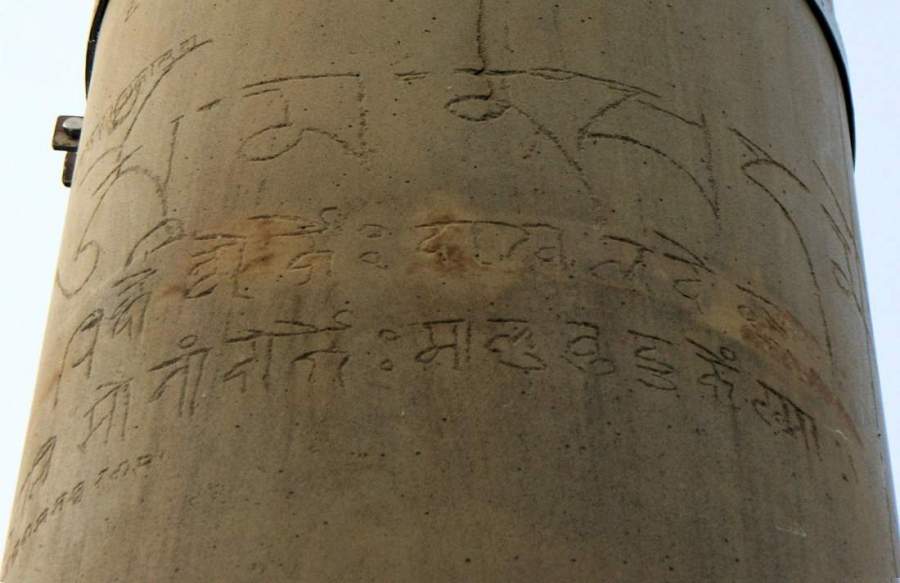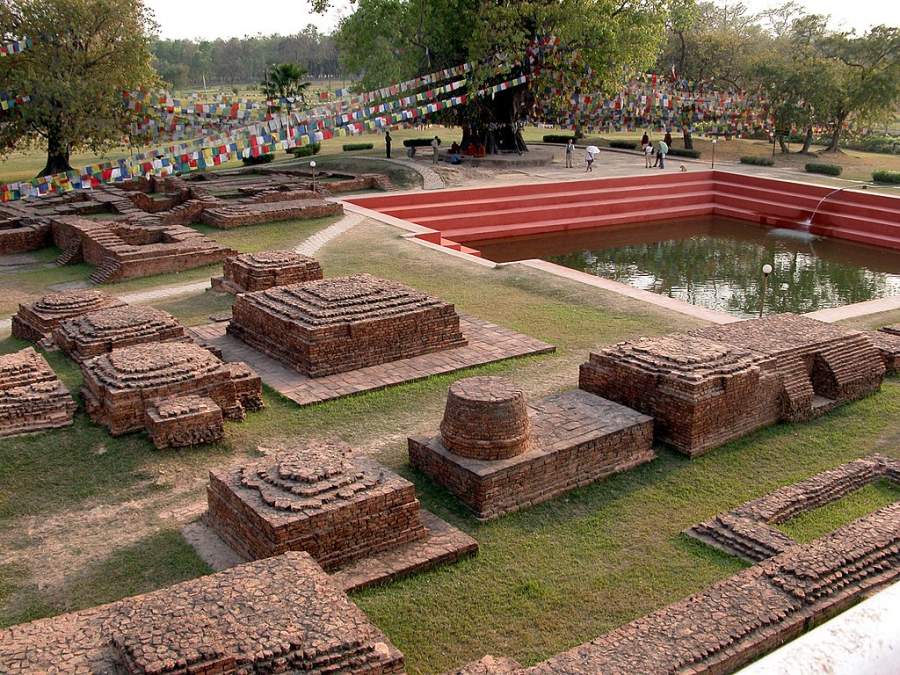

By Deepak Shimkhada, Ph.D.
For the spread of Buddhism, we must begin our journey with Emperor Ashoka of Magadha who from Pataliputra as his capital ruled vast territories of India that included most of present-day Afghanistan. Ashoka, often called Ashoka the Great, who ruled from 304–232 BCE, was the emperor of the Maurya Dynasty and is remembered for his remarkable conversion to nonviolence and his merciful reign.
From a brute emperor to a merciful ruler
Kalinga was a turning point in Ashoka’s life. After the bloody battle of Kalinga that took, according to legend, 84,000 lives, Ashoka was disgusted by the killing that brought immense suffering not only to the people who lost their sons and husbands but also for himself. Overcome by grief, he threw down his weapon and promised to never hold it again and kill another living being. This transformation made him a completely changed man and rebranded the mighty Mauryan Empire from a war machine to a society of tolerance and compassion, based on Buddha’s principles of ahimsa (non-violence).

Ashoka converted to Buddhism in 270 BCE and after converting he went to work, i. e. spreading the message of peace as taught by Buddha. He installed hundreds of stone pillars called sthambha throughout the land with the following message in the form of an edict on the pillars for all to see. They served as public message boards like the billboard that we see along the freeways and highways of the United States. There are many edicts, carved on large rocks or pillars, that bear long or short messages such as the one below.
“All men are my children.
I am like a father to them.
As every father desires the good and the happiness of his children,
I wish that all men should be happy always.”
After conversion, he appropriately took the name Devanampriya Priyadarshi or Piyadasi in short (the beloved of God). The Mauryan Empire during the time of Emperor Ashoka was immense, stretching all the way to present day Afghanistan, and such Ashokan pillars can be found throughout the Silk Road that run through the Bamiyan Valley of Afghanistan.
From his capital in Pataliputra (present day Patna), the emperor dispatched hundreds of envoys (messengers of peace) with the message of love, compassion, and peace in all directions—east, west, south, and north—by land and by sea. While some of his envoys traveled on the Silk Road to China through Bactria, Tarim Basin and Dun Huang, others headed to the west and reached Alexandria, Antioch, Anatolia (present day Istanbul) and Greece.

Temple of the Tooth
Ashoka’s son Mahendra and daughter Sanghamitra, after the king’s death, went to Lakdiva (Lanka, the present-day Sri Lanka) to spread Buddhism. They have been credited with founding the Buddhist sangha there. The famous Temple of the Tooth was built in the 4th century after Buddha’s tooth was smuggled to Sri Lanka from Kalinga by Princess Hemamala and Prince Dantha. In a day and age when we are preoccupied with the cases of art theft and trafficking, we might ask why the prince and princess had to resort to smuggling and whether it is moral or ethical to do so. In this case, as I read the accounts surrounding the legend, I learned that the neighboring kingdom attacked Kalinga with the intention of destroying the tooth. Hence, to safeguard the sacred relic, it was imperative to take it to a faraway land like Sri Lanka. I can see a corollary between this and the events that occurred in northern India when the universities of Nalanda, Vikramasila and Taxasila in the west were attacked by Muslim invaders. Some monks risked their lives to transport some Buddhist sutras (manuscripts), the repositories of Buddha’s teachings, to Nepal and finally to Tibet. Such smuggling was justified because it was done for safeguarding knowledge. If monks had not done that, they would have been perished along with the thousands of manuscripts when the libraries were burned by the invaders.
Ashoka’s life
It has been believed that Asoka was one of 101 sons of King Bindusara who had 16 wives. Ashoka means “No Sorrow”. His eldest brother, Prince Susima plotted to kill Asoka’s wife and child, but his mother intervened and it was she who was killed instead. Because of this crime, Prince Asoka was driven by hatred and a desire for vengeance. In revenge, Ashoka killed all his brothers except the one from his mother. His rampage did not stop until the war of Kalinga.
Dhamma-vijaya
After the Kalinga war and his conversion to Buddhism, Asoka stopped the ambition to become chakravartin (world ruler) by means of digvijaya or (conquest through war) and embarked on dhammavijaya (conquest by Dhamma or Dharma). And he did exactly that with his many acts of compassion by building hospitals including animal hospitals, asylums, and dispensaries throughout the land he ruled. These facilities were free of charge unlike our health care system which is designed to make a profit. We would become good human beings without converting to Buddhism if we applied our money and resources to ease the suffering of countless living beings with our resources and money.

Returning to the subject of art, a piece of sculpture was recently discovered from the Red Sea. On the auspicious occasion of Buddha’s 2567th birthday I wish to dedicate this short article to the Buddhist community by sharing the following information. Discovered from Berniki in the Red Sea, the statue of Buddha in Gandharan style is datable to the 2nd century BCE. Because it was found far away from the land of its origin, it is conceivable that Buddhism had gained widespread recognition and popularity during the Roman Empire. This statue may have been transported to the Western world through the Red Sea by a merchant or perhaps by a Buddhist monk to ensure its safe passage. Since it was found in the Red Sea, it is possible that the boat/ship on which it was being transported could have capsized. I see several possibilities for this: 1) It is a votive statue that people usually carry with them when they go on a long voyage in hope of a safe passage; 2) It is an object of art to sell. 3) According to some studies, in Egypt there was a sizable Buddhist community that might have produced the statue in the port of Alexandra. Whatever the case may be, images were carriers of ideas and religion that are spread to faraway lands, as it has happened in countries of Southeast Asia, for example, Thailand, Indonesia, Cambodia, Laos, and Vietnam.
A case in point for which we don’t have to go too far is Princess Bhrikuti who married a Tibetan King (Songtsen Gampoin the 7th century). When she went to Tibet, she is said to have carried many objects of Buddhist art. She is credited with introducing Buddhism in Tibet. No doubt such objects of faith played a vital role in spreading Buddhism.
Contacts between India and the Middle East through trade had been established the time of the Indus Valley civilization in the 2,000 BCE. According to Dr. Mustafa Waziri, Secretary-General of the Supreme Council for Archeology, “Current archaeological excavations at various sites in the Middle East have witnessed much important evidence of the existence of trade relations between Egypt and India during the Roman era, where Egypt was a central location on the trade route that connected the Roman Empire to many regions of the Ancient World, including India. Several ports during the Roman era on the Red Sea coast in Egypt participated in this trade, most importantly Briniki where ships arriving from India were loaded with products such as pepper, semi-precious stones, textiles, and ivory, which were unloaded, and shipments of beauty goods were transported across the desert to the Nile. Other ships would then transport goods to Alexandria and from there to the rest of the Roman Empire.”
Author
Dr. Deepak Shimkhada is a Professor of Art History and Religious Studies in Claremont, California, who can be reached at [email protected] for any comments.
Comment